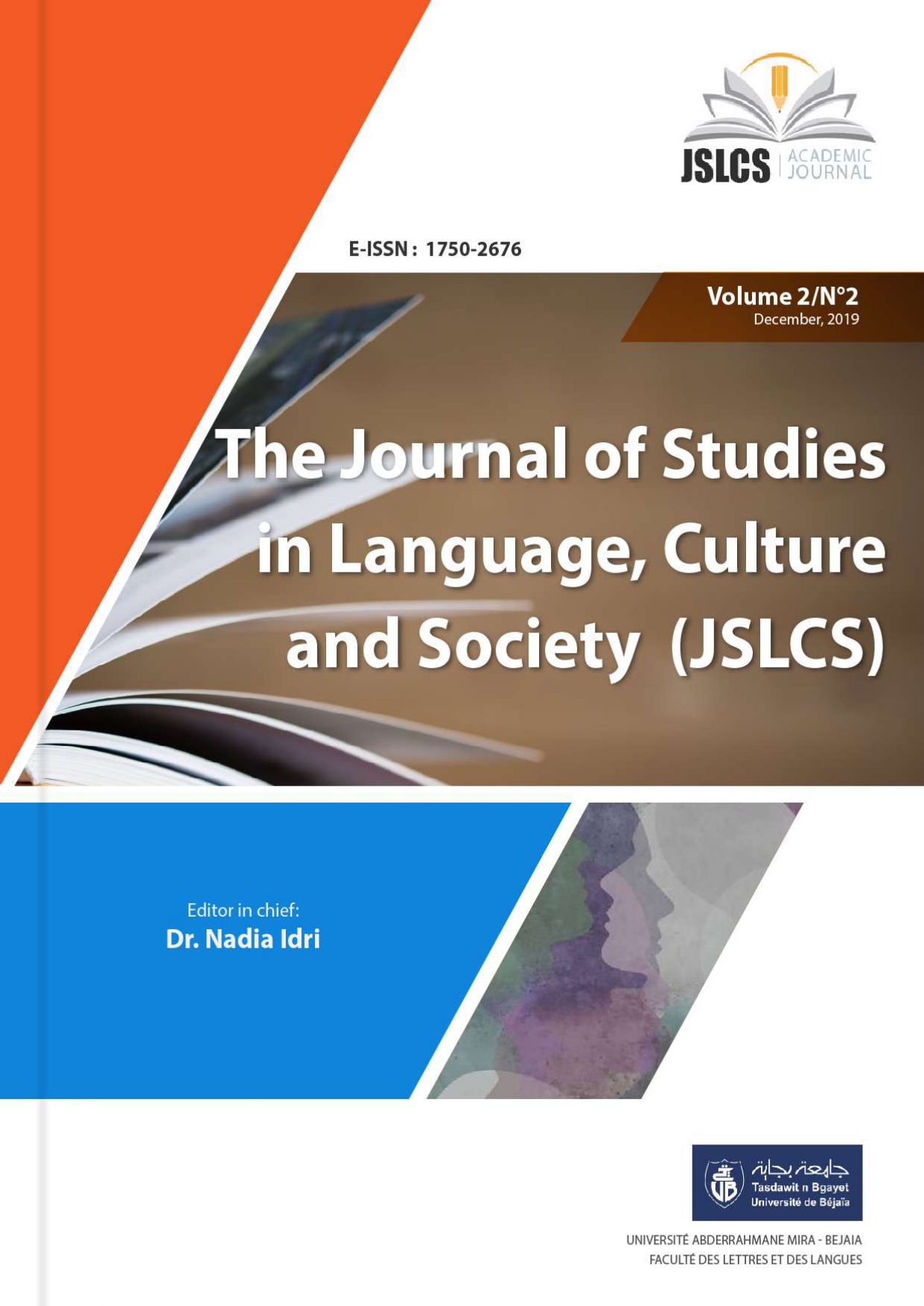English As A Foreign Language Learners‟ Attitudes Towards Using Videos In Raising Their Cross-cultural Awareness: The Case Of Third Year Students Of English At The University Of Sétif
Keywords:
Audio-visual Material, Cross-cultural Awareness, EFL Students, Oral Expression, VideosAbstract
The understanding and appreciation of different cultures mirrored via different languages by means of objective, non-judgmental and biased comparisons is of overriding importance in foreign language classes. For this purpose, this study is an attempt to investigate the relationship between videos as an audio-visual material and the EFL Algerian third year English students „cross-cultural awareness at the University of Setif2. This research revolves around the basic hypothesis that foreign language students hold positive attitudes towards the use of videos in language teaching in Oral Expression sessions due to its effectiveness in promoting their cross-cultural awareness. To this end, a questionnaire was administered to a randomly chosen sample of (250) third year students. The analysis of the data has demonstrated that the targeted learners possess indeed positive vis-à-vis videos as a means to develop their cross-cultural awareness. That is, the research hypothesis was confirmed. This led to gain more insights into the core of the matter and by far open the door to further research attempts and suggestions in the realm of audio-visual materials and cultural awareness, two seemingly multifaceted areas.
References
- Apte, M. (1994). Language in sociocultural context. The Encyclopedia of Language and Linguistics. (Vol.4, pp. 2000-2010). Oxford: Pergamon Press.
- Canale, M. and Swain, M. (1980). Theoretical bases of communicative approaches to second language teaching and testing. Applied Linguistics 1.
- Corder, S. P. (1966). The Visual Element in Language Teaching. London: Longman.
- Di Carlo, A. (1994). Comprehensible input through the practical application of video texts second language acquisition. Italica, 71(4), 465-483.
- Hall, S. (1981). Notes on deconstructing the popular. In R. Samuel (ed), People's History and Socialist Theory. London: Routledge.
- Hanvey, R. G. (1981). Cross cultural awareness. In E. C. Smith & L. F. Fiber (eds), Toward Internationalism. (pp. 46-56). Rowley, MA: Newbury House.
- Harmer, J. (2001). The practice of English language teaching (3rded). London: Longman.
- Hymes, D. (1972). On communicative competence. In J. B. Pride and J. Holmes (eds), Sociolinguistics. Harmondsworth: Penguin.
- Newmark, P. (1988). A textbook of translation. New York: Prentice Hall.
- Oppenheim, A. N. (1992). Questionnaire Design Interviewing and Attitude Measurment. London: Pinter Publishers Limited.
- Rivers, W.M. (1981). Teaching foreign-language skills. Chicago: The University of Chicago Press.
- Rogers, C. V., & Medley, F. W. (1988). Language with a purpose: Using authentic material in the foreign language classroom. Foreign Language Annals, 21(5), 467−478.
- Tylor, E.B. (1871). Primitive culture. London: J. Murray.
- Wen Qiufang. (2000). Testing & Teaching Spoken English. Shanghai: Shanghai Foreign Language Education Press.








